Xylophanes undata
Xylophanes undata
zail-AH-fan-eesM un-DAY-tuh
Rothschild & Jordan, 1903
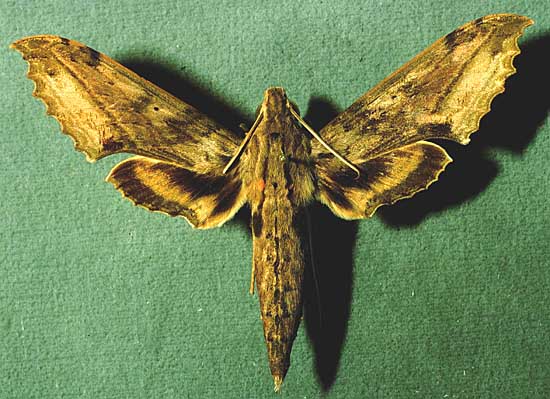
Xylophanes undata male courtesy of Dan Janzen.
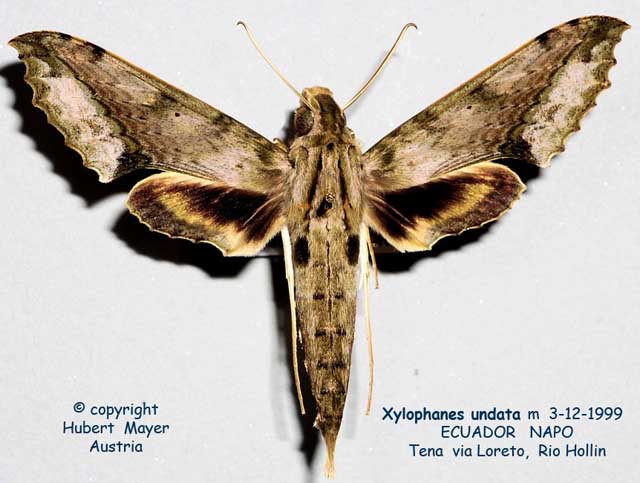
Xylophanes undata male, Rio Hollin, Napo, Ecuador,
December 3, 1999, courtesy of Hubert Mayer.
This site has been created by
Bill Oehlke at oehlkew@islandtelecom.com
Comments, suggestions and/or additional information are welcomed by Bill.
TAXONOMY:
Family: Sphingidae, Latreille, 1802
Subfamily: Macroglossinae, Harris, 1839
Tribe: Macroglossini, Harris, 1839
Genus: Xylophanes Hubner [1819] ...........
Species: undata Rothschild & Jordan, 1903
|
MIDI MUSIC
.....It's a Wonderful World.....
copyright C. Odenkirk
ON.OFF
<bgsound src="world.mid" LOOP=FOREVER>
|
DISTRIBUTION: Xylophanes undata [wingspan 72-83 mm, females larger than males]
fly in Costa Rica and generally from Central America to
Peru (specimen type locality): Pasco: Oxapampa: Pozuzo (HM), and further south into
Ecuador: Napo: Rio Hollin (HM);
Bolivia: Cochabamba: (1500-2000m), Beni: Yacuma (300-800m).
Gonenyo irrorata Rothschild, 1894, Peru, is the same as
Xylophanes undata. This specimen from Yasuni, Ecuador (Napo/Pastaza),
was captured on film by Steve Graser on September 10, 2002 at 10:40 PM
| 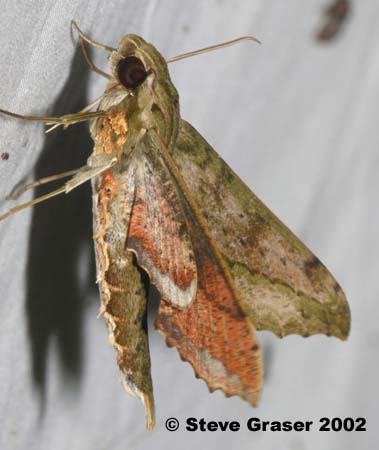
|
The pronunciation of scientific names is troublesome for many. The "suggestion" at the top of the page is merely a suggestion. It is based
on commonly accepted English pronunciation of Greek names and/or some fairly well accepted "rules" for latinized scientific names.
The suggested pronunciations, on this page and on other pages, are primarily put forward to assist those who hear with internal ears as they read.
There are many collectors from different countries whose intonations and accents would be different.
Jean Marie Cadiou writes, "When I say "Xylophanes" in English I pronounce it something like "Zailophanees", with the emphasis on the
"o". The French pronounce it differently, something like "Kzeelophaness" with no emphasis, and the Germans yet in a different way..."
In Greek myth, Phanes is the golden winged Primordial Being who was hatched from the shining Cosmic Egg that was the source of the
universe. He personifies light emerging from chaos.
"Xylo" is the Greek word for wood.
The specimen type for the genus Xylophanes is Xylophanes anubus. Perhaps ? when Hubner
examined that species, the yellow-orange and brown tones of the forewings suggested wings of wood.
The species name "undata" is from Latin meaning "wavy edged", refering to the outer margin of the forewing.
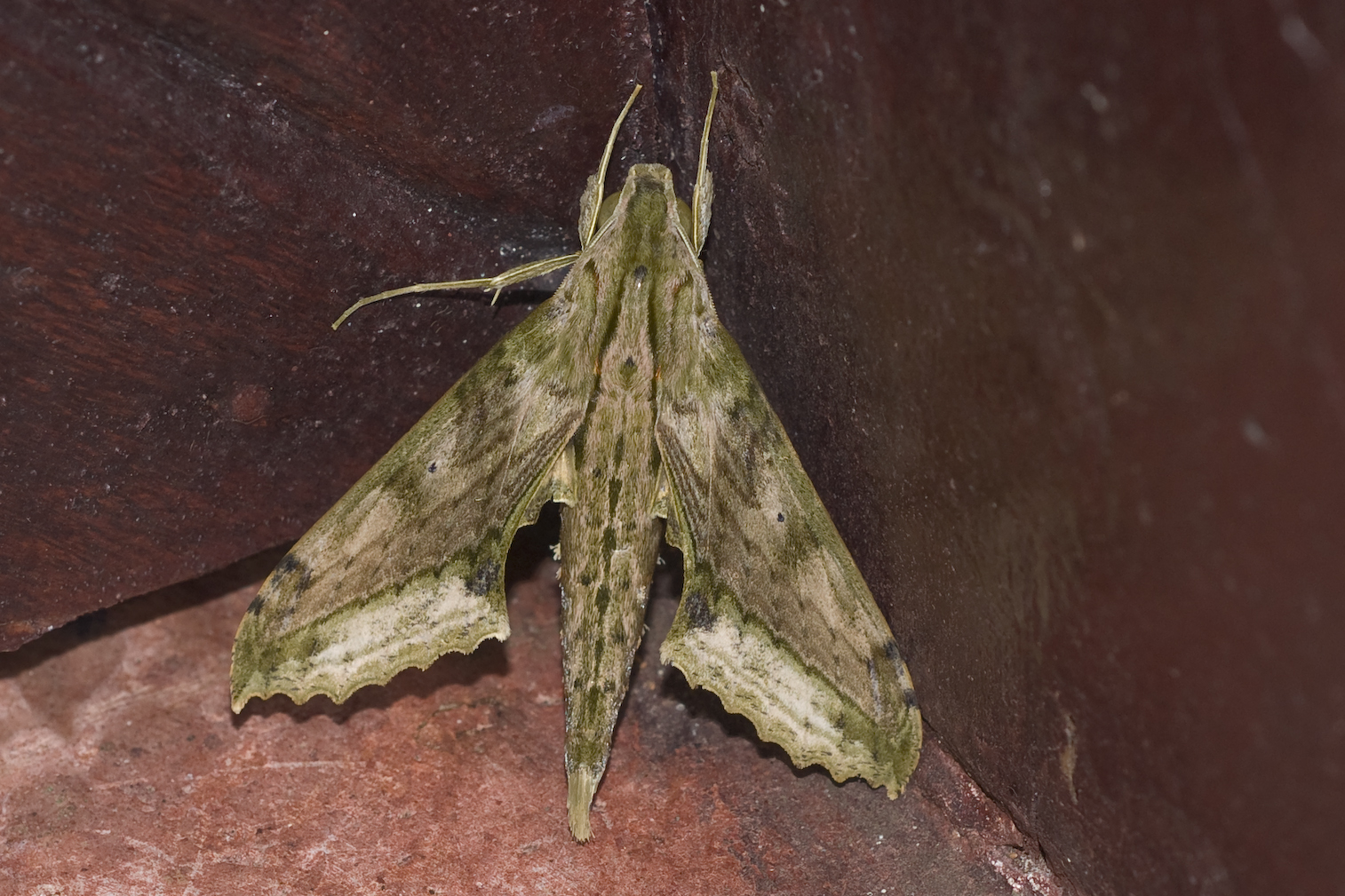
Xylophanes undata, Ilan-Ilan Lodge, Tortuguero, Limon, Costa Rica,
July 2009, courtesy of Debbi Brusco.
FLIGHT TIMES:
Xylophanes undata adults have been taken every month (except March) of the year in Costa
Rica. In Peru there are three main flights, in January-February, in June and in October-November.
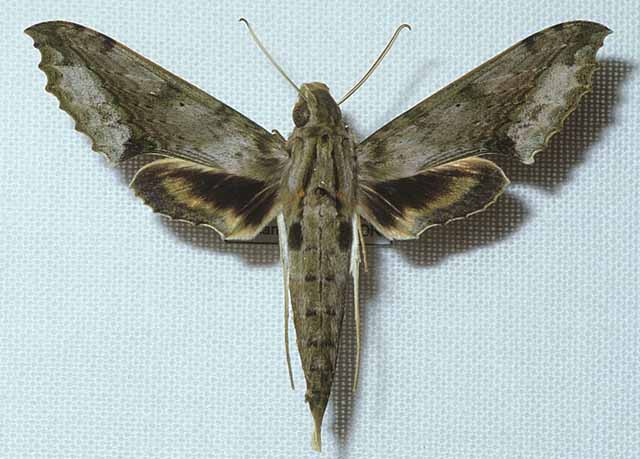
Xylophanes undata male, courtesy of Hubert Mayer
copyright.
ECLOSION:
Pupae probably wiggle to surface from subterranean chambers just prior to eclosion.
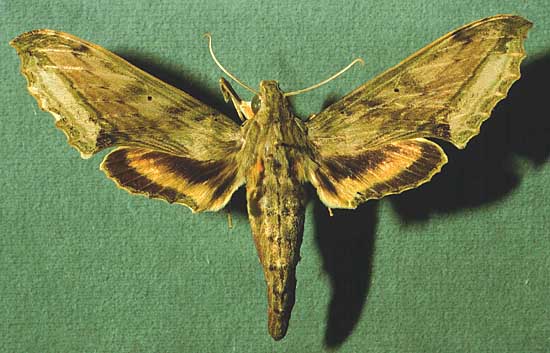
Xylophanes undata female courtesy of Dan Janzen.
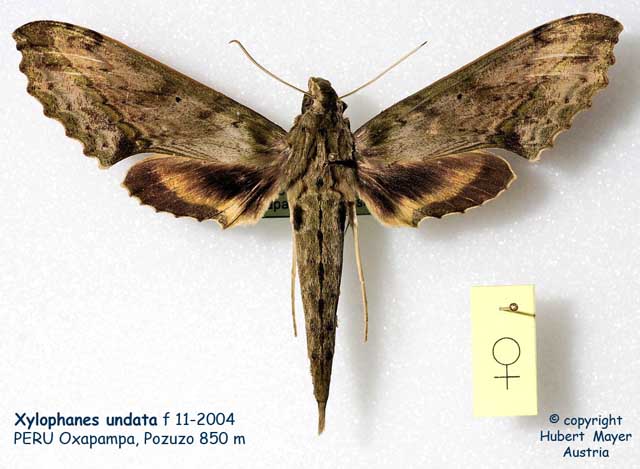
Xylophanes undata female, Pozuzo, Oxapampa, Pasco, Peru,
November 2004, 850m, courtesy of Hubert Mayer.
SCENTING AND MATING:Females call in the males with a pheromone released from a gland at the tip of the
abdomen. Males come in to lights very readily, but females are seldom taken in that way. The females are active from
midnight until 1:30 am, and the males are active from 12:30 am until 3:00 am. This specimen from Yasuni, Ecuador,
was captured on film by Steve Graser in early September, 2002. | 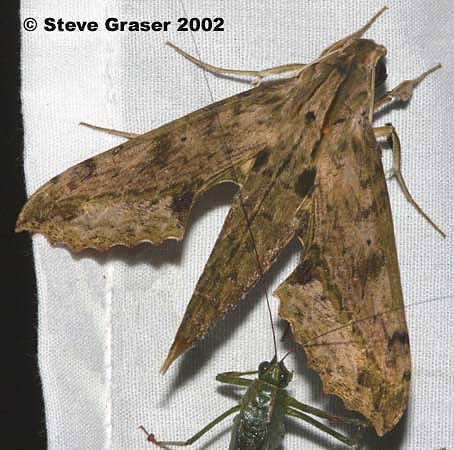 |
EGGS, LARVAE, PUPAE:
Larvae probably feed on plants in the Rubiaceae family.
Use your browser "Back" button to return to the previous page.
Goto Main Sphingidae Index
Goto Macroglossini Tribe
Goto Central American Indices
Goto Carribean Islands
Goto South American Indices
Goto U.S.A. tables







